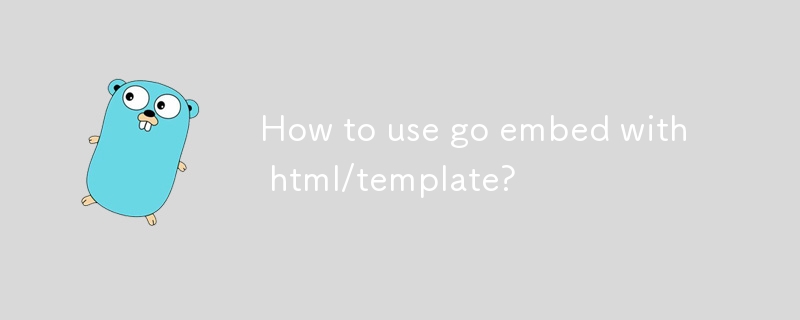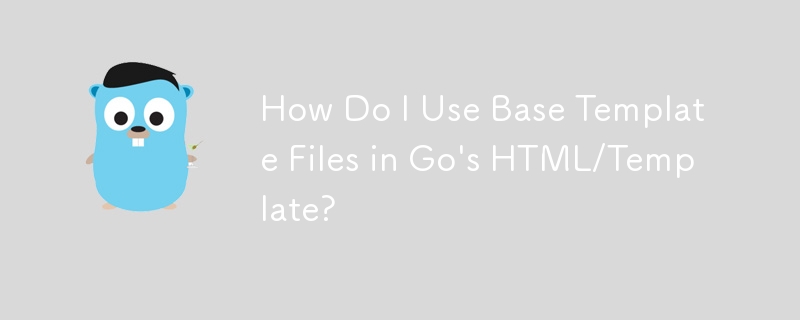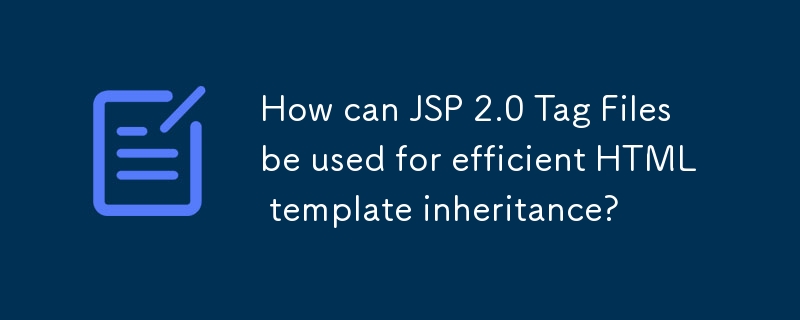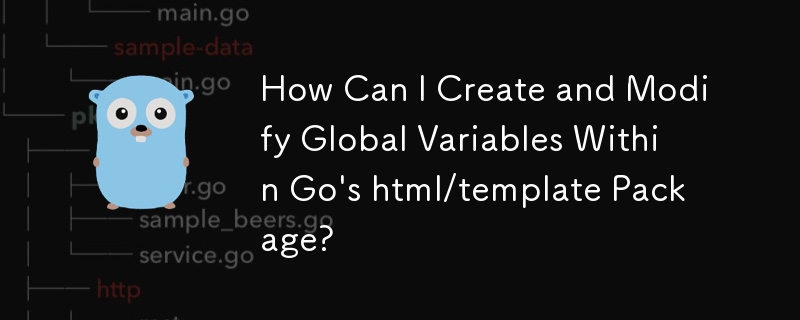Found a total of 10000 related content

Why does html/template escape \'\'?
Article Introduction:Understanding HTML/Template EscapingAn issue has been raised regarding html/template unnecessarily escaping "
2024-11-04
comment 0
970

HTML `template` Tag for Client-Side Templating
Article Introduction:Using HTML template tags as client templates is a lightweight, dependency-free dynamic content insertion scheme. 1. template is a lazy container introduced by HTML5, and the internal content will not be parsed or rendered; 2. Get and clone its content through JavaScript, fill in the data and insert it into the DOM, which is suitable for repeated structures such as user lists; 3. When using it, scripts, styles and data bindings need to be processed manually; 4. It is suitable for small projects or low-complexity components, while large projects are recommended to use frameworks such as React/Vue instead.
2025-07-23
comment 0
900

How to use go embed with html/template?
Article Introduction:Using Go's embed package combined with html/template, HTML templates can be packaged directly into binary files. 1. Create a .html file in the templates/ directory; 2. Embed the file system into variables with //go:embedtemplates/*.html; 3. Use template.ParseFS (templateFS, "templates/*.html") to parse the template; 4. Render the specified template through ExecuteTemplate. To support subdirectories, you need to add templates/users/*.html or Go1.20's ** recursive mode;
2025-07-30
comment 0
441


HTML5 Template: A Base Starter HTML Boilerplate for Any Project
Article Introduction:Building your own HTML5 template: A concise guide
This article will guide you on how to create your own HTML5 template. We will step by step explaining the key elements of the HTML basic template, and finally providing a simple template that you can use and further build.
After reading this article, you will have your own HTML5 template. If you want to get the HTML template code now, read this article later, here is our final HTML5 template.
Key Points
HTML5 templates, as reusable templates, contain the necessary HTML elements, help avoid repeated code writing at the beginning of each project.
A basic HTML5 template should contain document type declarations, elements with language attributes, and passed characters
2025-02-08
comment 0
749


Deep Dive into HTML `template` Tag
Article Introduction:It is a lazy container used in HTML to store unrendered content. The browser will not parse its internal structure or load resources until it is explicitly inserted into the DOM through JavaScript. Its advantages include better performance, safer, and clearer semantics; the usage steps are: 1. Define the template content; 2. Get the template content (via .content); 3. Insert the page using document.importNode(); it is also widely used in modern frameworks such as Vue and is compatible with mainstream browsers.
2025-07-30
comment 0
746

Getting to Know Cutestrap, a Lightweight CSS Framework
Article Introduction:Cutestrap: A Lightweight CSS Framework for Streamlined Web Development
This article explores Cutestrap, a lightweight CSS framework, demonstrating its capabilities through a simple one-page HTML template example.
Key Features:
Ultra-lightweight: We
2025-02-21
comment 0
866

What is the purpose and usage of the html template element?
Article Introduction:The HTML element is used to store HTML structures that are not rendered immediately. It is cloned through JavaScript and inserted into the page to achieve reuse and dynamic update of content. The advantage is to keep the page clean and avoid flickering of unreleased content; it is often found in duplicate UI components, dynamic page updates and template localization management. Specific usage steps: 1. Define the template tag with id; 2. Cloning the content with document.importNode; 3. Modifying the cloned node data; 4. Insert it into the DOM. Notes include avoiding ID conflicts, using class selectors, deep copy nodes, and placing template locations reasonably. In addition, the scripts in the template will not be executed automatically. You need to manually touch the page after inserting it.
2025-07-09
comment 0
592


What is the HTML template tag?
Article Introduction:Tags are containers used in HTML5 to store lazy content. They are not directly rendered when the page is loaded, but can be dynamically extracted and used through JavaScript. It is suitable for scenes where the same structure needs to be created repeatedly, such as generating lists, cards, or pop-ups. 1. The UI component structure can be predefined to improve component development efficiency; 2. Reduce the amount of code used by JS to splice HTML to enhance maintainability; 3. Improve page performance, because the template does not participate in rendering at the beginning. The steps to use include: define the template structure in HTML, obtain and clone its contents in JavaScript, and insert the DOM after modification. Notes include: only effective in modern browsers, avoid directly embedding scripts or styles, and it is recommended to add class names or IDs for operation in complex structures.
2025-07-07
comment 0
885

Exploring the HTML `` and `` elements for web components.
Article Introduction:Define unrendered HTML templates, suitable for component reuse; reserve slots to implement content distribution. Content can be dynamically inserted by JS, but the resources will not be rendered initially or loaded; external incoming content is allowed to replace the default value, and named slots are supported. Both are commonly used in WebComponents, and are combined with CustomElements to create custom elements that can encapsulate structures and styles. Steps: Create a template → Define the class inheritance HTMLElement → attachshadowroot → Clone the template and add shadowDOM → Register custom elements.
2025-07-03
comment 0
988

Using the HTML Template Tag for Reusable Content
Article Introduction:Using tags can efficiently reuse HTML code, and its content is not rendered by default, but can be cloned and inserted into the DOM through JavaScript. The specific steps are: 1. Define the template structure; 2. Get the template through document.getElementById; 3. Cloning the content with document.importNode; 4. Add the clone content to the specified location of the DOM; 5. The clone content can be dynamically modified to achieve personalized display. Suitable for reuse of static structures, such as user cards, modal boxes, etc., it is lighter than frames and requires no external dependencies. Note that scripts and styles only take effect after insertion, avoid ID conflicts and consider the impact of resource delayed loading.
2025-07-08
comment 0
693

Getting Creative With HTML Dialog
Article Introduction:So, how can you take dialogue box design beyond the generic look of frameworks and templates? How can you style them to reflect a brand’s visual identity and help to tell its stories? Here’s how I do it in CSS using ::backdrop, backdrop-filter, and a
2025-06-04
comment 0
326

How Do Pipelines Work in Go's Template Engine?
Article Introduction:Pipelines in Go Template Engine ExplainedGo provides two template packages: text/template and html/template. The html/template package focuses on...
2024-12-26
comment 0
637



















